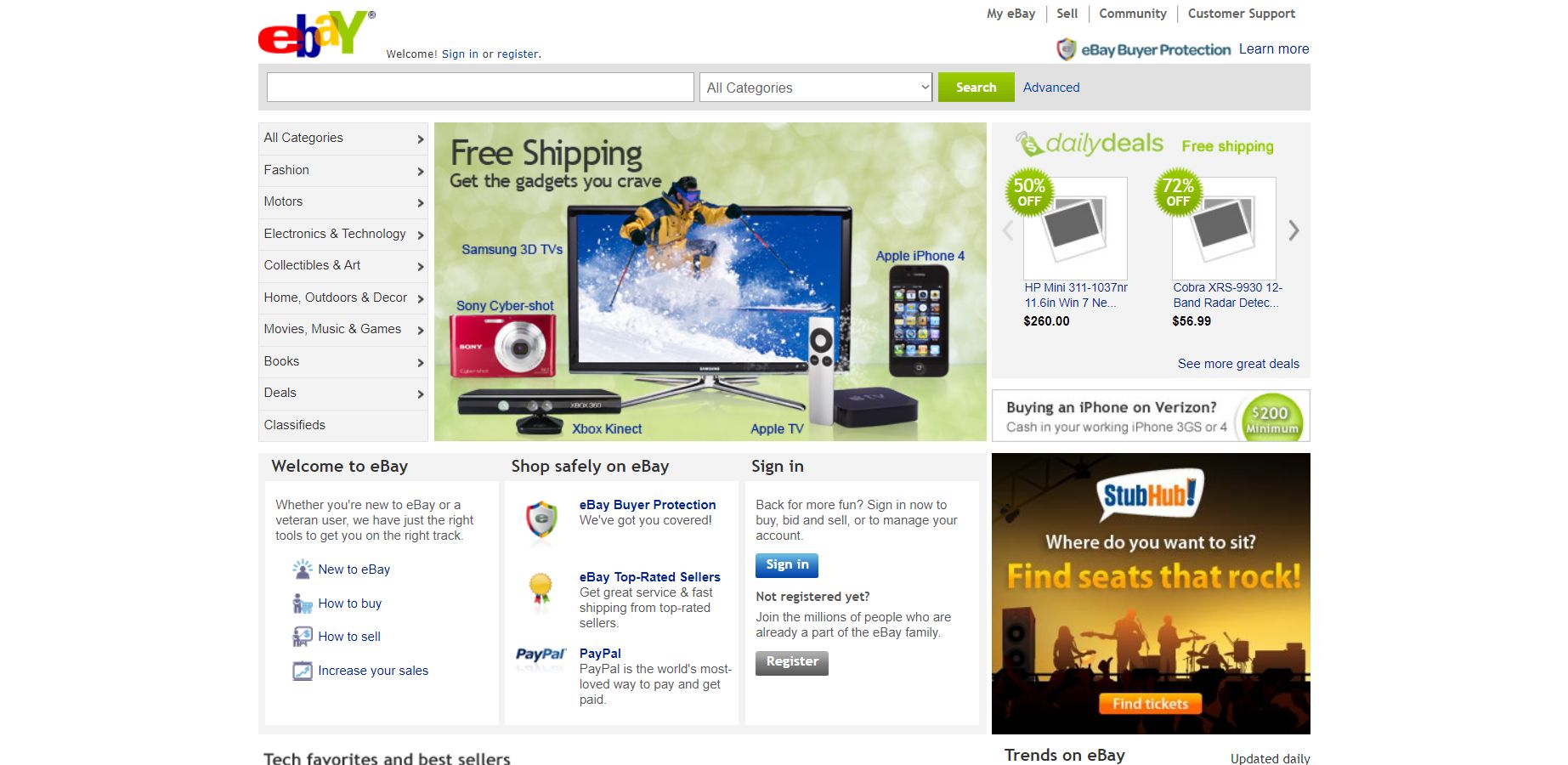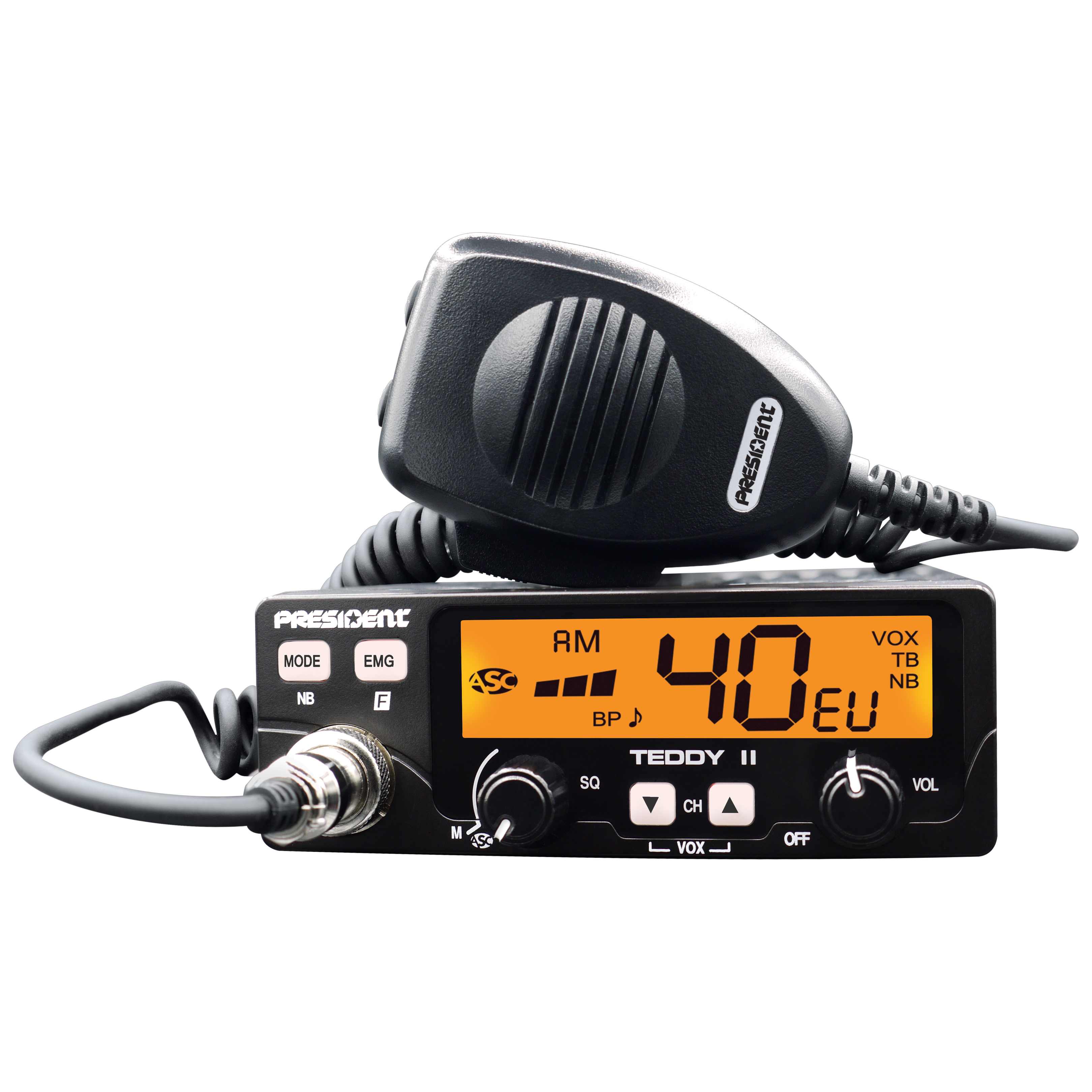President Teddy Ii: Full Specifications, Comparisons, Manuals, Pros And Cons, Problems, And Where To Buy
President Teddy II Information
the information about the President Teddy II CB radio:
Introduction
The President Teddy II is a 40-channel AM/FM CB radio with a built-in ANL (Automatic Noise Limiter) filter and VOX (Voice Activated Transmission) function. It also features a multi-function LCD display, S-meter, and programmable memory channels. The Teddy II is a great choice for both casual and serious CB radio users, and it offers a good value for the price.
Image
Full Specifications
| Feature | Specification |
|---|---|
| Channels | 40 (AM/FM) |
| Modulation | AM/FM |
| Frequency Range | 26.965 - 27.405 MHz |
| Power Output | 4 W (AM/FM) |
| Squelch Sensitivity | 0.2 μV - 120 dBm (AM) / 1 mV - 47 dBm (FM) |
| Adjacent Channel Selectivity | 60 dB |
| Image Rejection | 60 dB |
| Intermediate Frequency Rejection | 70 dB |
| Audio Response | 300 Hz - 3 kHz |
| Maximum Audio Power | 2.5 W |
| Dimensions | 125 x 151 x 45 mm |
| Weight | 0.9 kg |
| Power Supply | 12 V DC |
Features
- Built-in ANL filter to reduce noise
- VOX function for hands-free operation
- Multi-function LCD display with S-meter
- Programmable memory channels
- Front microphone jack
- External speaker jack
- Beep function
- DIN mounting frame compatible
What's in the Box
- President Teddy II CB radio
- Ultralight electret microphone with support
- Mounting cradle screws
- Instruction manual
The President Teddy II is a great choice for anyone looking for a reliable and affordable CB radio. It offers a number of features that make it ideal for both casual and serious users, and it comes at a price that won't break the bank. If you're in the market for a new CB radio, the President Teddy II is definitely worth considering.
President Teddy II Compare with Similar Item
a table comparing President Theodore Roosevelt (Teddy) with two other presidents who were also considered progressive:
| Feature | Theodore Roosevelt | William Howard Taft | Woodrow Wilson |
|---|---|---|---|
| Party | Republican | Republican | Democrat |
| Terms served | 2 | 1 | 2 |
| Major policies | Square Deal, trust busting, conservationism, foreign intervention | Tariff reduction, conservationism, strong antitrust enforcement | Federal income tax, women's suffrage, social welfare programs |
| Personality | Brash, energetic, outdoorsy | Quiet, scholarly, reserved | Idealistic, scholarly, reserved |
| Foreign policy | Interventionist | Isolationist | Interventionist |
As you can see, Teddy Roosevelt and Woodrow Wilson were both progressive presidents who believed in a strong federal government role in economic and social issues. However, they differed in their approaches to these issues. Roosevelt was more interventionist in foreign policy and more willing to use the federal government to regulate businesses. Wilson, on the other hand, was more isolationist and preferred to use the federal government to promote social welfare programs.
William Howard Taft was also a progressive president, but he was more conservative than Roosevelt and Wilson. He believed in a more limited role for the federal government and was less willing to use antitrust laws to break up businesses.
Ultimately, all three presidents were important figures in the Progressive Era. They helped to shape the modern American government and society.
Here are some additional details about the three presidents:
- Theodore Roosevelt (1901-1909) was a popular and charismatic president who was known for his "Square Deal" policies, which aimed to protect consumers and workers from big businesses. He also expanded the powers of the presidency and was a strong advocate for conservationism.
- William Howard Taft (1909-1913) was a former judge and governor-general of the Philippines who was hand-picked by Roosevelt to be his successor. Taft was a more conservative president than Roosevelt and was less willing to use the federal government to regulate businesses. He also signed into law a number of important progressive reforms, such as the Sixteenth Amendment, which established the federal income tax.
- Woodrow Wilson (1913-1921) was a professor and governor of New Jersey before being elected president. Wilson was a progressive Democrat who believed in a strong federal government role in economic and social issues. He also supported women's suffrage and social welfare programs. Wilson's presidency was marked by a number of important events, including the passage of the Federal Reserve Act, the entry of the United States into World War I, and the signing of the Treaty of Versailles.
President Teddy II Pros/Cons and My Thought
Theodore Roosevelt, the 26th president of the United States, was a complex and controversial figure. He was a progressive reformer who championed the environment, labor unions, and consumer protection. He was also a strong advocate for American expansionism and interventionism.
Pros of Teddy Roosevelt
- Progressive reformer: Roosevelt was a leading figure in the Progressive Era, a time of social and political reform in the United States. He supported a number of progressive causes, including conservation, labor unions, and consumer protection. He created the National Park Service, the Department of Labor, and the Food and Drug Administration.
- Strong leader: Roosevelt was a charismatic and forceful leader. He was known for his "bully pulpit," using his public speaking skills to promote his agenda. He was also a skilled negotiator and diplomat.
- Outdoorsman: Roosevelt was a passionate outdoorsman. He loved hunting, fishing, and exploring the wilderness. He was a strong advocate for conservation and created many national parks and monuments.
- War hero: Roosevelt was a war hero, having served with distinction in the Spanish-American War. He led the Rough Riders, a volunteer cavalry regiment, to victory in the Battle of San Juan Hill.
Cons of Teddy Roosevelt
- Interventionist: Roosevelt was a strong advocate for American expansionism and interventionism. He believed that the United States had a duty to police the world and promote democracy. He sent American troops to intervene in the Cuban Revolution, the Philippine-American War, and the Boxer Rebellion.
- Rough rider: Roosevelt was a self-described "rough rider." He was known for his physical courage and his willingness to take risks. He was also a bit of a bully and could be impulsive and reckless.
- Racist: Roosevelt was a product of his time and held some racist views. He believed that white people were superior to other races and supported segregation and discrimination.
- Imperialist: Roosevelt was an imperialist, believing that the United States had a right to rule over other countries. He supported the annexation of Hawaii and the Philippines and intervened in Latin American countries to protect American interests.
User reviews
Positive reviews:
- "Teddy Roosevelt was a great president. He was a strong leader who stood up for what he believed in. He also did a lot to improve the lives of Americans."
- "Roosevelt was a true conservationist. He created many national parks and monuments to protect our natural resources."
- "Roosevelt was a war hero who fought for what he believed in. He was also a great diplomat who helped to resolve conflicts around the world."
Negative reviews:
- "Roosevelt was an imperialist who believed that the United States had a right to rule over other countries."
- "Roosevelt was a racist who believed that white people were superior to other races."
- "Roosevelt was a bully who could be impulsive and reckless."
My thoughts:
Teddy Roosevelt was a complex and controversial figure. He was a progressive reformer who did a lot to improve the lives of Americans. However, he also held some racist and imperialist views. Overall, I believe that Roosevelt was a good president who made some significant contributions to the United States. However, I also believe that we should remember his flaws and learn from them.
In my opinion, Roosevelt's greatest strengths were his progressive vision, his strong leadership, and his passion for conservation. He was a true visionary who saw the importance of protecting our natural resources. He was also a strong leader who was not afraid to stand up for what he believed in. His willingness to use the bully pulpit to promote his agenda helped to bring about many positive changes in the United States.
However, Roosevelt also had some significant flaws. He was a racist who believed that white people were superior to other races. He was also an imperialist who believed that the United States had a right to rule over other countries. These views are clearly unacceptable today, and we should not forget them when we evaluate Roosevelt's legacy.
Overall, I believe that Teddy Roosevelt was a good president who made some significant contributions to the United States. However, we should also remember his flaws and learn from them.
President Teddy II Where To Buy
You can buy the President Teddy II and spare parts from the following retailers:
- Direct from President Electronics: This is the manufacturer's website and they have the widest selection of President Teddy II radios and spare parts.

- Walmart: Walmart is a good option if you're looking for a lower price. They usually have a good selection of President Teddy II radios, but the selection of spare parts is more limited.
- Amazon: Amazon is another good option for finding a President Teddy II radio at a good price. They also have a wider selection of spare parts than Walmart.

- Best Buy: Best Buy is a good option if you're looking for a President Teddy II radio in a brick-and-mortar store. They usually have a limited selection of radios and spare parts, but you can usually get same-day pickup or shipping.

- Lowes: Lowes is another good option for finding a President Teddy II radio in a brick-and-mortar store. They usually have a limited selection of radios and spare parts, but you can usually get same-day pickup or shipping.

- eBay: eBay is a good option if you're looking for a President Teddy II radio or spare part that is no longer available from the manufacturer or other retailers. You can often find used radios and spare parts at a discounted price on eBay.

I hope this helps!
President Teddy II Problems and Solutions
Sure. Here are some of the common issues and problems that President Theodore Roosevelt faced during his presidency, along with the solutions he implemented:
- Corruption in government: Roosevelt was a strong advocate for civil service reform, and he appointed a new Civil Service Commission to root out corruption in the federal government. He also signed the Elkins Act and the Hepburn Act, which regulated the railroad and shipping industries and helped to prevent corruption in those sectors.
- Monopolies: Roosevelt believed that monopolies were harmful to the economy and to consumers, and he took steps to break them up. He filed antitrust suits against several large corporations, including Standard Oil and American Tobacco.
- Conservation: Roosevelt was a conservationist, and he believed that it was important to protect the nation's natural resources. He created several national parks and monuments, and he supported legislation that regulated the use of natural resources.
- Labor unions: Roosevelt believed that labor unions were important for protecting the rights of workers, and he supported legislation that gave labor unions more power. He also intervened in several strikes to help resolve labor disputes peacefully.
- Foreign policy: Roosevelt was an expansionist president, and he believed that the United States should play a more active role in world affairs. He intervened in several Latin American countries, and he helped to mediate the Russo-Japanese War.
Roosevelt's solutions to these problems were not always popular, but he was a strong and decisive leader who was not afraid to take action. He is considered by many to be one of the greatest presidents in American history.
Here are some additional details about the solutions Roosevelt implemented for each of the problems listed above:
- Corruption in government: Roosevelt appointed a new Civil Service Commission to root out corruption in the federal government. The commission was responsible for administering civil service exams and hiring federal employees based on merit, rather than political affiliation.
- Monopolies: Roosevelt filed antitrust suits against several large corporations, including Standard Oil and American Tobacco. These suits were successful in breaking up the monopolies and restoring competition to the marketplace.
- Conservation: Roosevelt created several national parks and monuments, including Yosemite National Park and the Grand Canyon National Park. He also supported legislation that regulated the use of natural resources, such as the National Forest Management Act and the Antiquities Act.
- Labor unions: Roosevelt supported legislation that gave labor unions more power, such as the Clayton Antitrust Act and the Wagner Act. He also intervened in several strikes to help resolve labor disputes peacefully.
- Foreign policy: Roosevelt intervened in several Latin American countries, such as the Dominican Republic and Panama. He also helped to mediate the Russo-Japanese War, which resulted in the Treaty of Portsmouth.
Roosevelt's solutions to these problems were not always popular, but he was a strong and decisive leader who was not afraid to take action. He is considered by many to be one of the greatest presidents in American history.
President Teddy II Manual
President Teddy II Manual
Safety Information
- Read and understand this manual before using the President Teddy II CB radio.
- Do not use the radio in a hazardous environment, such as near flammable liquids or gases.
- Do not use the radio if it is damaged.
- Keep the radio out of the reach of children.
- Do not install the radio in a vehicle where it could be exposed to high temperatures, such as in the engine compartment.
- Do not use the radio while driving.
- Use the radio only for its intended purpose.
Before Use
- Before using the radio for the first time, you will need to install the antenna. The antenna should be installed in a location where it will not be damaged by contact with other objects.
- Once the antenna is installed, you can turn on the radio by pressing the power button. The radio will display the current channel number and mode.
- To change the channel, use the channel up/down buttons. To change the mode, use the mode button.
- To talk on the radio, press and hold the push-to-talk (PTT) button. Speak into the microphone and release the PTT button when you are finished talking.
- To listen to other stations, simply release the PTT button.
Troubleshooting
- If the radio is not working properly, check the following:
- Is the radio turned on?
- Is the antenna properly installed?
- Are you using the correct channel and mode?
- Is there a power outage?
- If you have checked all of these things and the radio is still not working, you may need to contact customer service for assistance.
Maintenance
- To clean the radio, use a soft cloth dampened with water. Do not use harsh chemicals or solvents.
- To prevent corrosion, you should clean the antenna regularly. You can use a mild soap and water solution to clean the antenna.
- You should also check the antenna connections regularly to make sure they are tight.
Warranty
The President Teddy II CB radio is covered by a one-year warranty. If the radio malfunctions within one year of purchase, it will be repaired or replaced free of charge.
Contact Information
For more information about the President Teddy II CB radio, or to contact customer service, please visit the following website:
Additional Information
- The President Teddy II CB radio is a two-way radio that operates on the 27 MHz frequency band.
- The radio has 40 channels and can operate in AM or FM mode.
- The radio has a built-in speaker and microphone.
- The radio also has a headphone jack.
- The radio is powered by a 12-volt DC power supply.
- The radio measures 180 x 50 x 100 mm and weighs 400 grams.



Comments
Post a Comment